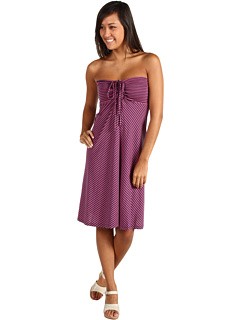What is Eco Fashion – Every time we turn around it seems there is a new word popping into our collective vocabulary. This is especially true when it comes to the green movement. The term for environmentally-friendly clothing or fashion design, for instance, is eco-fashion. These are generally items made with renewable or sustainable resources.
This is the opposite of fast fashion which is cheap clothing and accessories that focus on the trend-of-the-moment. Fast fashion is more disposable because it was cheap to make and cheap to acquire. Consumers don’t value it as much because it was inexpensive to acquire. However, all along the supply chain, fast fashion comes at high costs, including high human costs.

What is Eco-Fashion? Defining Eco-Fashion
The “official” definition of eco-fashion is a focus on clothing that takes into account not only the environment, but the health of the consumers who will be wearing the clothes and the working conditions of the people involved with making the clothes. Go green in style with Eco Fashion. Learn the latest trends, styles and tips to help you save the planet while looking fashionable. Shop sustainable fabrics, second-hand pieces, upcycled garments and more. Make a statement with Eco Fashion today!
Eco fashion is the future of sustainable style. Shop guilt-free and look good while doing it. Discover sustainable brands and trends that help protect the planet, all while keeping your wardrobe fresh and fashionable. Save the planet with eco-friendly fashion today! Eco fashion is a movement towards sustainable style. By supporting eco-friendly clothing brands and fabrics, you can help reduce the environmental impact of the fashion industry while looking fashionable. Discover the latest in sustainable style with our guide to eco fashion.
More specifically, eco-fashion encompasses:
- Clothes made using raw materials such as cotton grown without the use of pesticides or silk made from worms raised on organic vegetation.
- Garments and clothing made from recycled textiles, including creative use of materials such as recycled plastic.
- Articles designed to be more durable so they last longer.
- Clothes made without the use of certain harmful chemicals, dyes or bleaches.
- Accessories and clothing made under conditions where workers are treated fairly and paid a fair wadge for their efforts. Eco-fashion incorporates some human rights elements, specifically how workers who make the fashion items are treated.
Benefits to Choosing Environmentally-Friendly Fashion Products
Fabrics made from organic fibers are grown without toxic pesticides. In addition, farmers may rotate crops, weed by hand, and plant different crops together.
Vegan clothing is also considered eco-fashion. These are typically sustainable as well. Eco-friendly vegan clothing means it’s free from any type of animal products. It’s only made with plant and man-made fibers and hasn’t been tested on animals.
Embracing a Rising Trend of Eco-Fashion
Once upon a time, eco-fashion focused more on practical items. It was characterized by solid, neutral designs. There were organic tee shirts and skirts as well as linen pants and other everyday items.
Thanks to the creative vision of up-and-coming designers, eco-fashion is now perceived as a hot, rising trend. Using safe dyes, there are brighter colors and unique patterns. It took a long time to overcome the initial reaction to eco-friendly fashion as a novel concept. Now, eco-fashion clothing and accessories are attracting a wider range of consumers.

Eco-Friendly Designers
Some of the big names in the fashion industry began to realize the potential for going green when it comes to the clothes we wear. Anne Salvatore Epstein was one of the first designers to embrace the idea of eco-friendly fashion when she was pregnant.
Epstein wanted to embrace a more organic lifestyle for the sake of her child. Epstein collaborated with Marc Jacobs to figure out a way to make organic fashion trendy. Organic cotton, bamboo and recycled leather trims were incorporated into existing fashion lines to ease into the trend.
Making Eco-Friendly Designs Fashionable
Forerunners such as Birkenstocks and hemp bracelets have been replaced by attractive organic blends.
- Toad&Co. makes women’s travel dresses, travel skirts, pants, and more in eco-friendly fabrics. Learn about all this company does to minimize their footprint in this post about the best travel skirts.
- Sworn Virgins introduced a line that is 100% biodegradable, consisting mostly of dresses and knit tops.
- Linda Loudermilk has expanded the line of eco-designs to include dresses, shirts, suits and even jeans. Loudermilk has been credited with making eoc-fashion more sexy and cutting edge.
- Stella McCartney has created a line of high-end eco-fashions including everything from laid-back tops to chunky sweaters.
Expanding the Definition of Eco-friendly Materials
The material used in a garment does not necessarily have to organic to be considered eco-fashion. As long as the materials used are considered sustainable, a particular design fits the accepted definition of eco.
A sustainable material is material that comes from a crop that can be regrown or replanted once it is harvested for use in making garments. Bamboo is one example. Cotton can also fit this definition, even if some chemicals are used during the processing stage.
Animal-based materials such as wool and cashmere can also be considered eco-friendly, depending on how the animals were raised and so that the animals were not harmed in the gathering process.
Hippy Feet is a Minneapolis-based company who employs homeless youth for their embroidery, screen-printing and packaging. They make socks, shirts and caps with eco-friendly materials, including recycled cotton. In addition, some of their socks include recycled cotton and recycled polyester.
The company, Marc Skid, uses organic Pima cotton to make their eco-underwear. In addition, each pair uses one recyclable water bottle in the elastic. They donate $4 from every undergarment they sell to one of nine non-profits (you can choose from three of them, depending on the product you purchase).
Use of Natural Dyes in Eco-Fashion
Clothing with color is one of the biggest changes. Plant-based dyes are acceptable to provide coloration to eco-friendly materials. An additional benefit for consumers is less irritation from natural plant-based dyes and a reduced exposure to certain toxins.

Saving a Little Green
At a time when many people are cutting expense, many eco-friendly fashions are very affordable. Sure, there are some high-end eco-fashion lines, but you’ll find that anywhere in the fashion industry. Many manufactures are looking to cut costs and offer lower-priced alternatives to consumers focused on economizing.
Add to that the growing awareness of the importance of natural resources, and it’s easy to see why eco-fashion is so appealing. Eco-fashion has evolved to the point where you really can’t tell the difference between ecologically-friendly fashions and traditional fashion pieces.
The big difference is knowing that what you’re wearing was manufactured by methods acceptable to Mother Nature. They tend to be more classic and timeless pieces as well. Not only will you feel better about wearing such apparel, you’ll look good too!
Related articles:
- Best Travel Accessories for Women
- World’s Cheapest Shopping Destinations
- Best Travel Pants for Women
- Crush Your To-Do List with the Erin Condren LifePlanner

